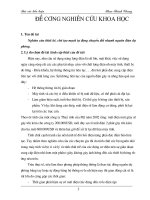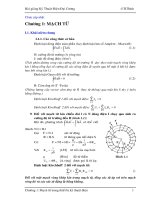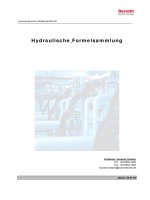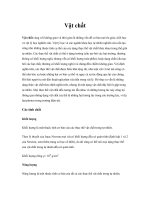Tài liệu SEC 03 doc
Bạn đang xem bản rút gọn của tài liệu. Xem và tải ngay bản đầy đủ của tài liệu tại đây (20.75 KB, 2 trang )
III
FastAlgorithms
andStructures
P.Duhamel
´
EcoleNationaleSup
´
erieuredesT
´
el
´
ecommunications(ENST)
7FastFourierTransforms:ATutorialReviewandaStateoftheArt P.DuhamelandM.
Vetterli
Introduction
•
AHistoricalPerspective
•
Motivation(or:whydividingisalsoconquering)
•
FFTs
withTwiddleFactors
•
FFTsBasedonCostlessMono-toMultidimensionalMapping
•
Stateof
theArt
•
StructuralConsiderations
•
ParticularCasesandRelatedTransforms
•
Multidimensional
Transforms
•
ImplementationIssues
•
Conclusion
8FastConvolutionandFiltering IvanW.SelesnickandC.SidneyBurrus
Introduction
•
Overlap-AddandOverlap-SaveMethodsforFastConvolution
•
BlockConvolution
•
ShortandMediumLengthConvolution
•
MultirateMethodsforRunningConvolution
•
Convo-
lutioninSubbands
•
DistributedArithmetic
•
FastConvolutionbyNumberTheoreticTransforms
•
Polynomial-BasedMethods
•
SpecialLow-MultiplyFilterStructures
9ComplexityTheoryofTransformsinSignalProcessing EphraimFeig
Introduction
•
One-DimensionalDFTs
•
MultidimensionalDFTs
•
One-DimensionalDCTs
•
Mul-
tidimensionalDCTs
•
NonstandardModelsandProblems
10FastMatrixComputations AndrewE.Yagle
Introduction
•
Divide-and-ConquerFastMatrixMultiplication
•
Wavelet-BasedMatrixSparsifi-
cation
T
HEFIELDOFDIGITALSIGNALPROCESSINGgrewrapidlyandachieveditscurrentpromi-
nenceprimarilythroughthediscoveryofefficientalgorithmsforcomputingvarioustrans-
forms(mainlytheFouriertransforms)inthe1970s.InadditiontofastFouriertransforms
(FFTs),discretecosinetransforms(DCTs)havealsogainedimportanceowingtotheirperformance
beingveryclosetothestatisticallyoptimumKarhunenLoevetransform.
Transforms,convolutions,andmatrix-vectoroperationsformthebasictoolsutilizedbythesignal
processingcommunity,andthissectionreviewsandpresentsthestateofartintheseareasofincreasing
importance.
ThechapterbyDuhamelandVetterli,“FastFourierTransforms:ATutorialReviewandaStateof
theArt”,presentsathoroughdiscussionofthisimportanttransform.SelesnickandBurruspresent
c
1999byCRCPressLLC
an excellent survey of filtering and convolution techniques in the chapter “Fast Convolution and
Filtering”.
One approach to understanding the time and space complexities of signal processing algorithms
is through the use of quantitative complexity theory, and Feig’s “Complexity Theory of Transforms
in Signal Processing” applies quantitative measures to the computation of transforms. Finally, Yagle
presents a comprehensive discussion of matrix computations in signal processing in “Fast Matrix
Computations”.
c
1999 by CRC Press LLC









